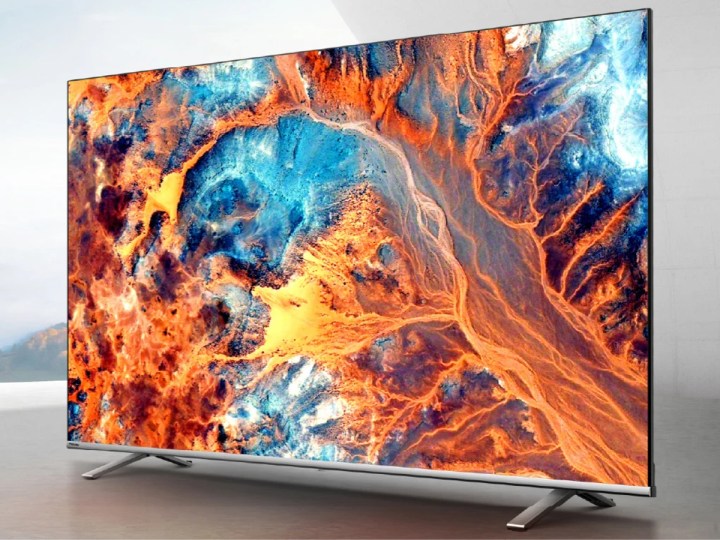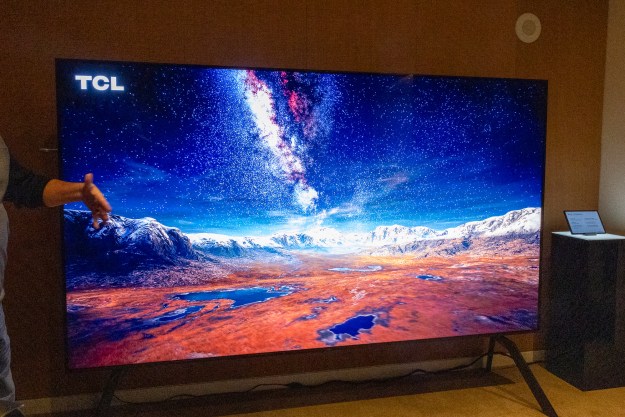
There’s never been a better time to buy a 4K TV. Prices have continued to drop even as screen sizes and smart TV features have continued to grow. But now that 4K TVs are priced within reach of almost anyone who wants one, are you actually going to be able to enjoy all of the extra detail and picture quality that 4K promises? The answer is, sadly, not as often as you expect, and not without some considerable extra investment over and above the cost of the TV.
Modern 4K TVs are packed with a lot of impressive technologies that can make picture quality look amazing, no matter what you’re watching. With upscaling driven by complex algorithms and often aided by AI, even watching an old DVD on a 4K TV will look way better than it did on an HDTV from 10 years ago. But to truly get the best possible results, you need access to native 4K content, preferably with some flavor of HDR, like Dolby Vision, HDR10, or HDR10+.
The good news is that virtually every streaming service can now offer you a variety of TV shows and movies in 4K HDR, including Netflix, Amazon Prime Video, Max, Disney+, Apple TV+ — the list goes on. The bad news is that we’re beginning to see these services charge extra if you want to watch at 4K resolution.
Technically, Netflix has always done this. The only way to Netflix and chill at 4K/HDR/Dolby Atmos is to sign up for the company’s most-expensive Premium plan at a not-so-chill $23 per month. Max (the service formerly known as HBO Max) used to include 4K/Dolby Atmos streams in its $16 per month Ad-Free tier. But as of December 5, 2023, those subscribers will have to pay $20 per month for the service’s Ultimate Ad-Free plan if they want to maintain access to this higher-quality content. YouTube TV charges $10 per month on top of its regular subscription price if you want to access its 4K content, while Paramount+ requires you to buy its Paramount+ with Showtime plan (at double the cost of its standard plan) if you want 4K, HDR, and Dolby Atmos.
It’s true that so far, this pay-to-play strategy has only taken hold at four major VOD streaming services, but it’s worth keeping in mind that between Netflix and Max alone, we’re talking about a combined 348 million subscriptions worldwide. It’s also worth keeping in mind that the cost of accessing 4K content is actually just one part of the equation. You’ll also need an internet connection capable of streaming all of that extra resolution.
We’re still trying to figure out why, but each streaming service has its own ideas about how much speed you’ll need. On the low end, Netflix says 15 Mbps will work, however Disney, Apple, Paramount, and Google all require 25 Mbps — and Max wants you to have at least 50 Mbps.
That bandwidth can be surprisingly difficult to come by. “While the Federal Communications Commission (FCC) claims that most Americans have access to a connection of at least 25 Mbps download and 3 Mbps upload,” Tyler Cooper, editor-in-chief of BroadbandNow told Digital Trends, “we’ve found those claims to be overstated. In [our] most recent audit, we found that 42 million Americans do not have access to a connection meeting that 25 Mbps threshold.”
If you’re fortunate enough to be among the group of Americans who live in an area that is serviced by some version of high-speed internet, you probably have all the bandwidth you need. 88% of those of us who have access to high-speed broadband are subscribed to speeds higher than 200 Mbps, according to Cooper.
And, yet, that service doesn’t come cheap. You’re likely paying about $50 per month for 25 Mbps service, according to a survey by Forbes. But given that this speed is the minimum for a single 4K stream, you’re probably subscribed to a much faster package. The same survey showed that the average price for 1,000 Mbps — otherwise known as gigabit — is $90 per month.
At one point in time, it looked like free, over-the-air TV broadcasts might be the solution for folks looking to get 4K for a reasonable price. ATSC 3.0 otherwise known as NextGen TV, has been touting its technical benefits for years, including pristine quality 4K resolution, HDR, and advanced surround sound. But ATSC 3.0’s rollout has so far been a total letdown as far as picture quality is concerned.
Of the 121 stations currently broadcasting using the ATSC 3.0 format, none are broadcasting in 4K and there doesn’t appear to be a timeline in place for that to change.
There’s no question, it’s a great time to buy a 4K TV. Just make sure you set aside some money to pay for some 4K content, or you may not get the picture quality improvements you thought you were paying for.
Editors' Recommendations
- What we want to see from the next Apple TV 4K
- Samsung’s new 98-inch DU9000 4K TV is just $4,000. Can it beat TCL and Hisense?
- Let’s discuss an Apple TV 4K with a camera
- Hands-on with the Belkin iPhone Mount with MagSafe for Apple TV 4K
- Belkin drops a $50 mount for iPhone video calls on Apple TV 4K




